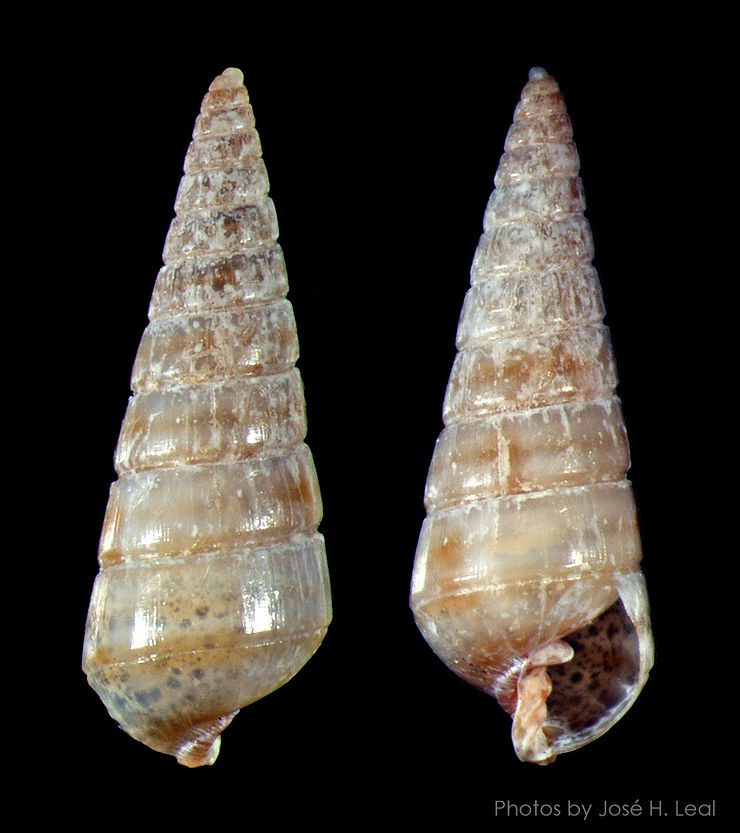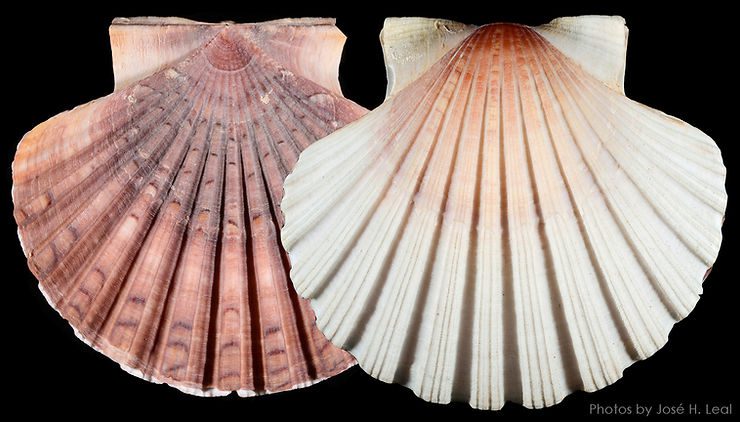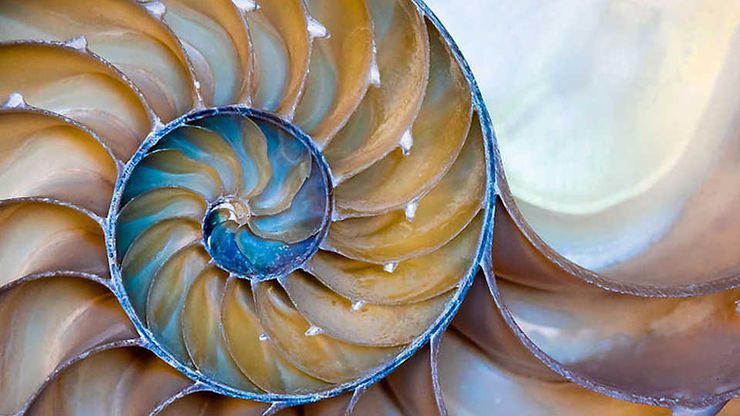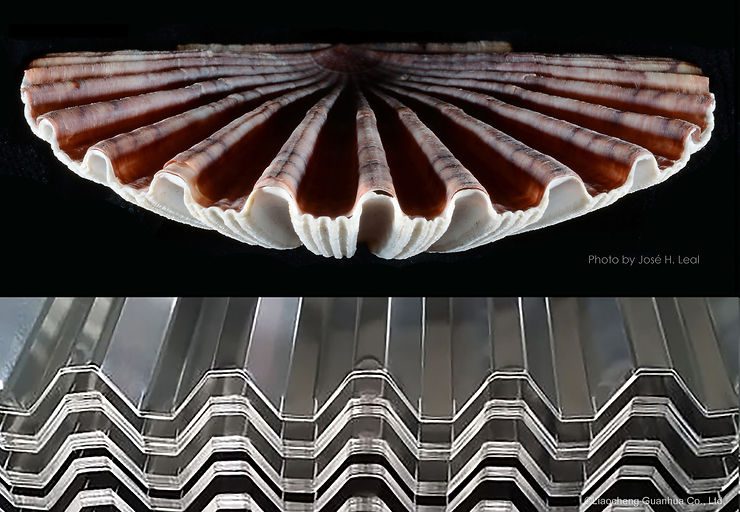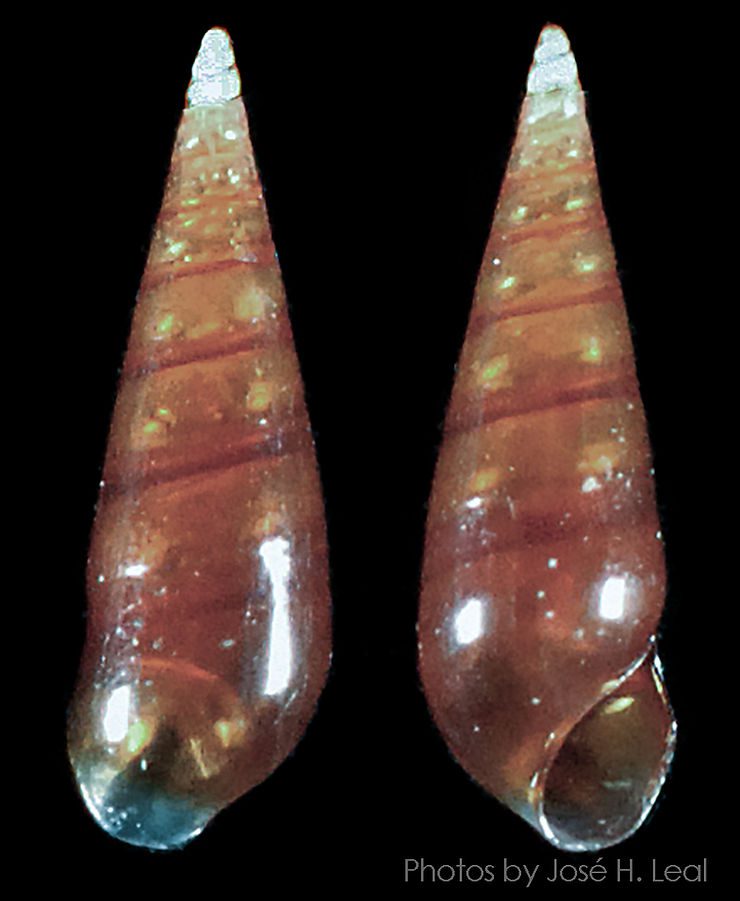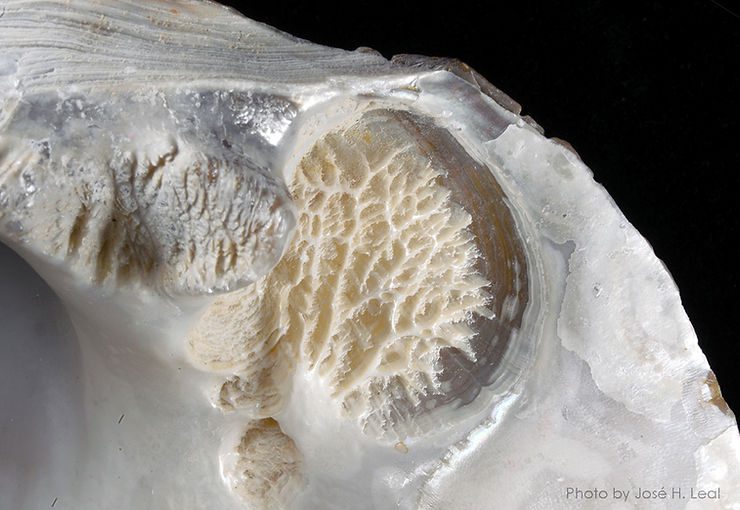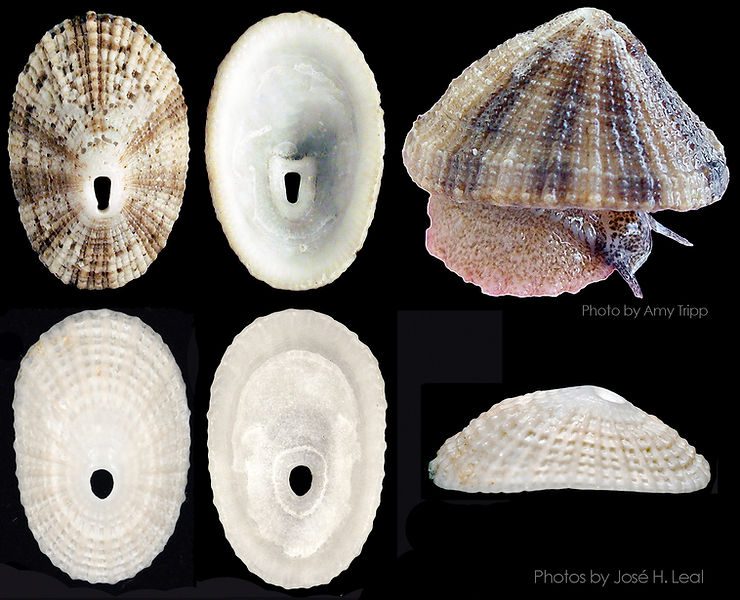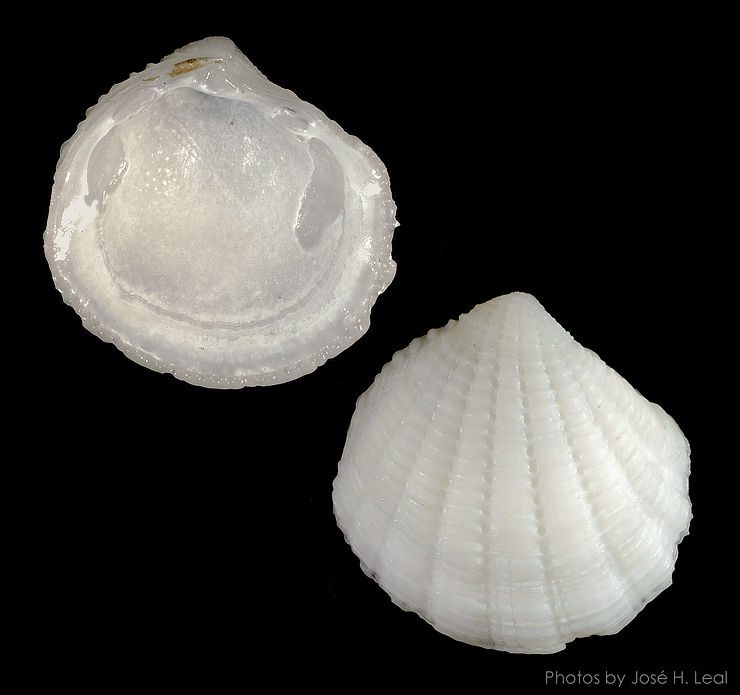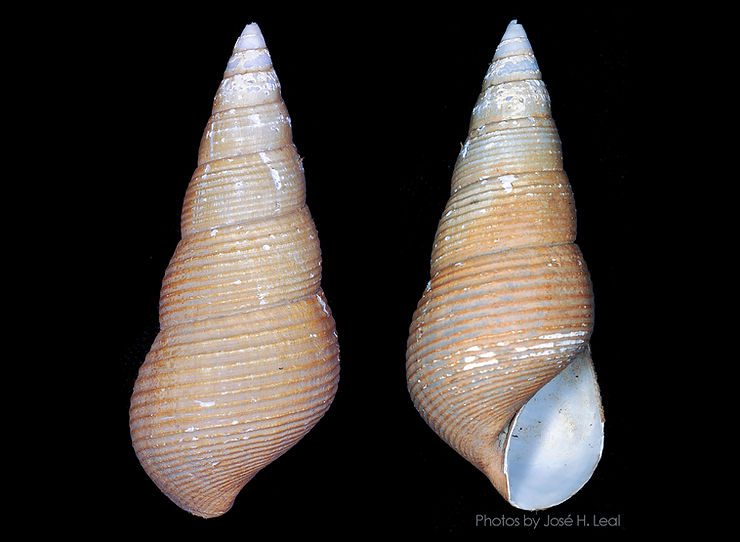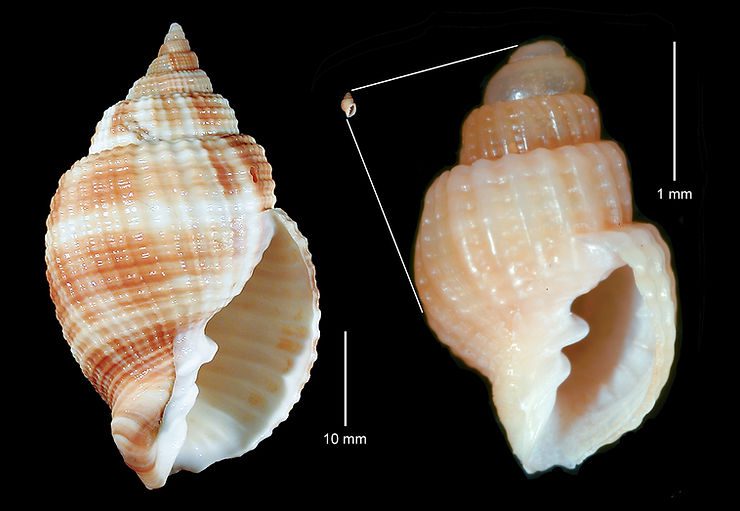
A Tiny, Young Nutmeg
After settling to the bottom (in the case of snails with a planktonic, free-living larva) or hatching from an egg capsule (when there is no planktonic larval stage), young marine snails often resemble adults of their species, though sometimes with different proportions, colors, or shell textures. These illustrations of Common Nutmegs, Cancellaria reticulata (Linnaeus, 1767) show such resemblance: on left, a 50 mm (about 2 inches) adult nutmeg; on top-center, rendered at the same scale as the ad
